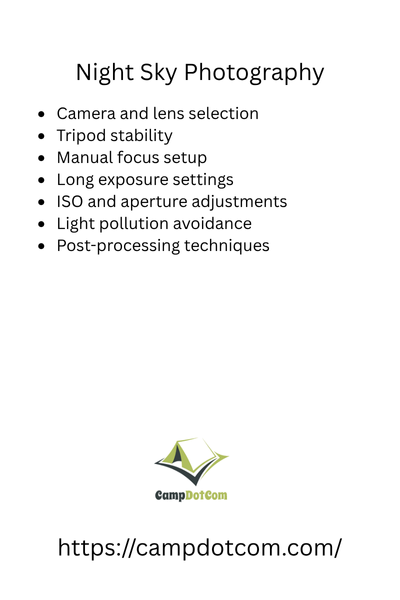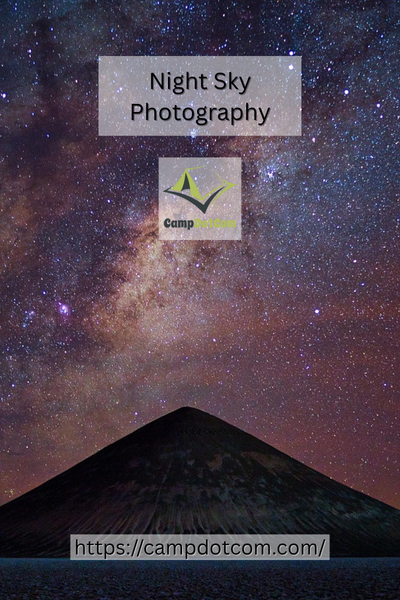There is something magical about night sky photography. The first time I pointed my camera at the stars, I did not expect much. Maybe a few blurry dots. But when that first image appeared on my screen, wow. I could not believe that those stars, those galaxies, were always up there, just waiting to be seen.
Read More About Night Sky Photography

Why the Heck is the Sky so Hard to Shoot?
If you’ve ever tried night sky photography and ended up with a black frame or a shaky mess, trust me, you’re not alone. My first few attempts were a mix of underexposed darkness and a smudge that I’m still not convinced wasn’t a ghost. I thought, “Is my camera broken, or am I just really bad at this?”
Turns out, I was just missing a few key tricks. Once I figured out how to set up properly and what to look for, everything changed. And no, you don’t need some NASA-level gear to get started.
As an Amazon Associate, I earn from qualifying purchases. Some of the links in this article are affiliate links. This means that, at zero cost to you, I will earn an affiliate commission if you click through the link and finalize a purchase.
You Don’t Need Fancy Stuff (But a Tripod Helps)
Let me be real with you—yes, better gear helps, but you can absolutely start night sky photography with a basic DSLR or mirrorless camera. The biggest game changer? A sturdy tripod. I used to balance my camera on my backpack. Don’t do that. Your future self will thank you.
A wide-angle lens with a low f-stop (f/2.8 or lower) is your best friend. Oh, and don’t forget to bring an extra battery. Cold nights will suck the life out of your gear faster than you can say, “Where’d the Milky Way go?”
Why Location and Darkness Matter for Night Photograph
The best shots happen far away from city lights. I once drove two hours out to the middle of nowhere in my beat-up sedan, snacks in the glovebox and zero cell signal. When I stepped out and looked up, the sky looked like it had been dusted with glitter. I actually gasped.
For real though—download a light pollution map app. These are lifesavers. Look for places with “dark sky” designations or just ask around. Sometimes your buddy’s uncle’s backyard in the boonies turns out to be perfect.
Settings that Actually Work (No Wizardry Required)
Astronomy lovers use accurate tools to plan the best nights for night sky photography. For the perfect shot, use a tripod, shoot on clear, dark nights with little moonlight, and adjust your camera for long exposure to capture stars clearly.
More Things to Know About Night Sky Photography

Alright, let’s get into it. When you’re starting with night sky photography, try this combo:
- Shutter speed: 15–20 seconds
- Aperture: As wide as your lens allows
- ISO: Start at 1600 and tweak from there
Yes, you’ll need to experiment. But that’s half the fun, right? Once I got my first clean shot of Orion’s Belt, I practically did a victory dance in hiking boots. It felt like I’d discovered something ancient and secret.
Use manual focus. Auto-focus at night is like trying to text with your elbows—awkward and usually wrong. Just zoom in on a bright star in live view and adjust until it’s razor sharp.
Keep it Chill—Literally and Figuratively
Night photography isn’t a race. Some of my favorite sessions have been slow, quiet nights where I just watched the sky and waited for the perfect moment. Sometimes I don’t even shoot for the first hour—I just set up, take a deep breath, and let the night do its thing.
Pro tip: bring layers, a thermos of coffee or hot chocolate, and maybe a lawn chair. You’re not just taking photos; you’re having an experience.
Weird Glitches and Surprises
Once, I was shooting a long exposure when a meteor blazed across the sky right in the middle of the frame. I yelped like a kid at a fireworks show. And yeah, that shot went straight to my desktop background.
But I’ve also had nights where I forgot to turn off image stabilization or accidentally left my ISO at 100. It happens. Just laugh, learn, and try again.
Night Sky Photography Is More Than a Hobby
It is peaceful. It is challenging. It is awe inspiring. Whether I am capturing the Milky Way stretching across the sky or just catching a glimpse of a constellation through the clouds, night sky photography reminds me how tiny and amazing our place in the universe really is.
Plus, there is something cool about showing your friends a photo you took where Jupiter and Saturn are both hanging out, crystal clear. You get a “you took that?” kind of reaction, and yes, it feels good.
If you have been thinking about giving it a try, do it. Pack a snack, bring your tripod, and let the night show you something unforgettable. You do not have to be an expert, you just have to look up.
